On the Brink: Endangered Species
A photographer takes a closer look at animals fighting for survival
Photography by Joel Sartore
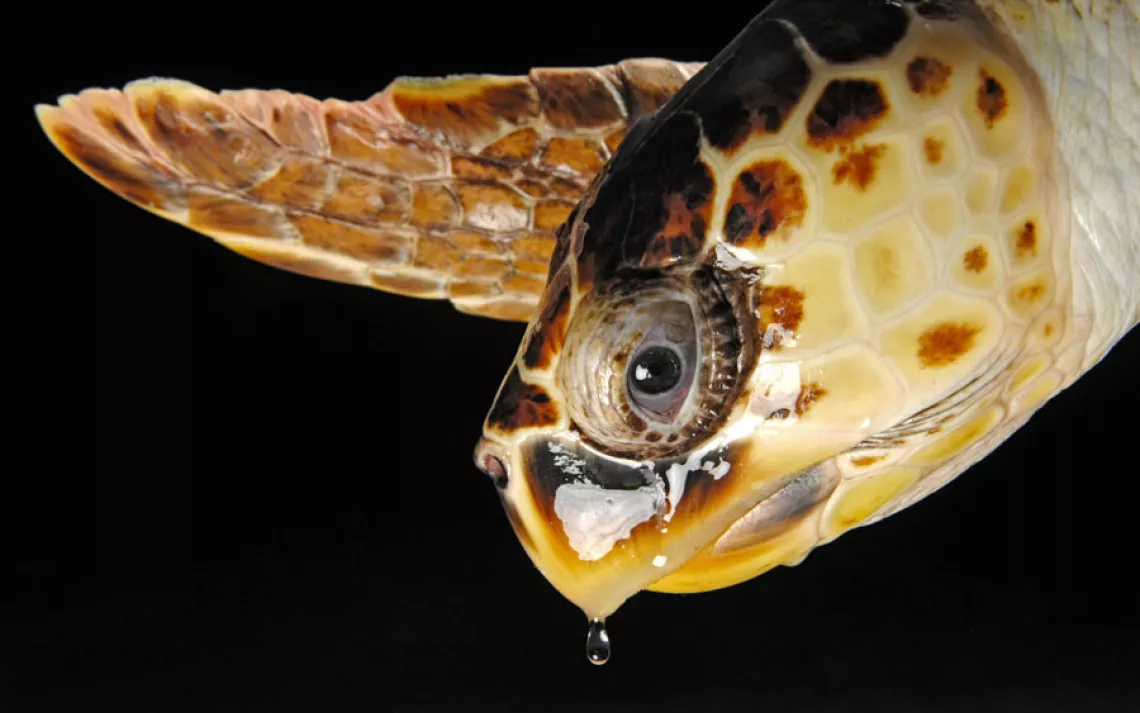
Images can fool us. With a few clicks, this photograph of an ancient loggerhead turtle can appear on any computer screen in the world. From our tech-aided vantage point, it's easy to be lulled into the thinking that this threatened sea turtle is common, ubiquitous, safe. Nothing could be further from the truth. All the animals featured in this slide show are among the last of their kind. They eke out a precarious existence, teetering on the edge of oblivion.
The loggerhead sea turtle, whose migration routes can span entire oceans, faces the loss of its nesting beaches and entanglement in shrimp trawling nets. The loggerhead is one of dozens of species featured in Joel Sartore's book Rare: Portraits of America's Endangered Species.
To capture these shots, Sartore traveled around the United States, visiting zoos, captive breeding programs, and conservation centers—the last safe havens for many of these animals. He set up makeshift photo studios on location, working with handlers and keepers to ensure that stress on the subjects was minimal. With Rare's stark, intimate shots, the photojournalist hopes "to show that there is beauty, grace, and value in every species."
When people care, there is hope. Many loggerhead nesting sites have been protected thanks to conservation efforts, and commercial fishing operations are experimenting with methods to reduce accidental bycatch. The Endangered Species Act has saved some animals from extinction; for others, it has enabled a slow comeback. Yet this lifesaving legal protection continues to face political attacks. Sartore's photographs remind us that if we do not protect rare species, we'll be left with only frozen mementos of the beautiful creatures we allowed to slip away. (Photographed at the Riverbanks Zoo, Columbia, South Carolina.)
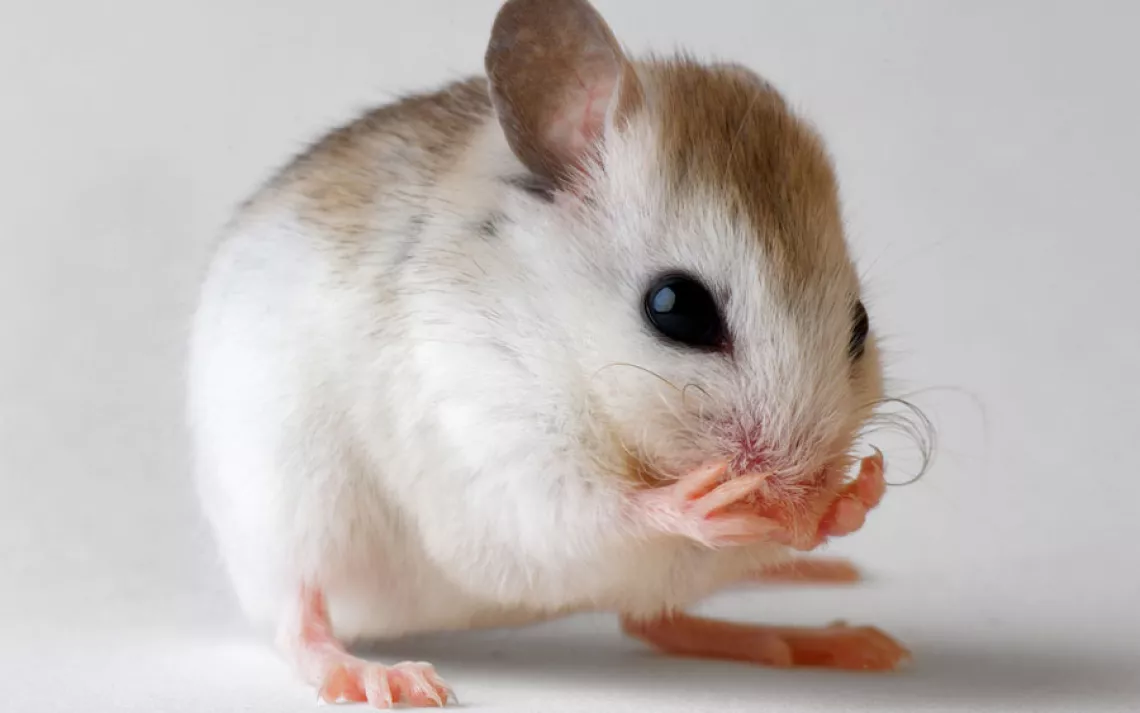
The tiny St. Andrew beach mouse seeks shelter solely in coastal sand dunes. Its entire remaining habitat spans a mere 20 miles in Florida. The mouse, which must compete with developers for space, is an important link in the dune ecosystem. (Photographed in Panama City, Florida)
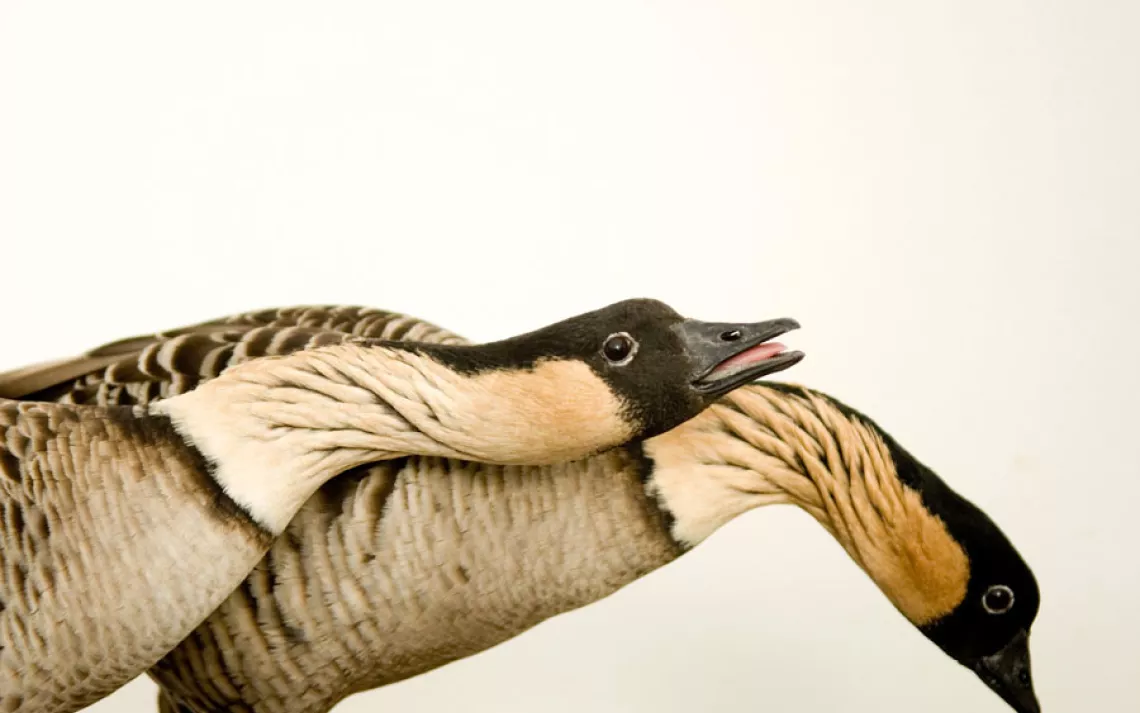
The nene, or Hawaiian goose, earned its name from its distinctive, murmur-like, "nay-nay" call. Hunting, habitat loss, and introduced predators and disease reduced the Nene's population to a mere 30 birds in 1951. Boosted by conservation and breeding programs, Hawaii's state bird now numbers in the thousands. (Photographed at the Great Plains Zoo, Sioux Falls, South Dakota)
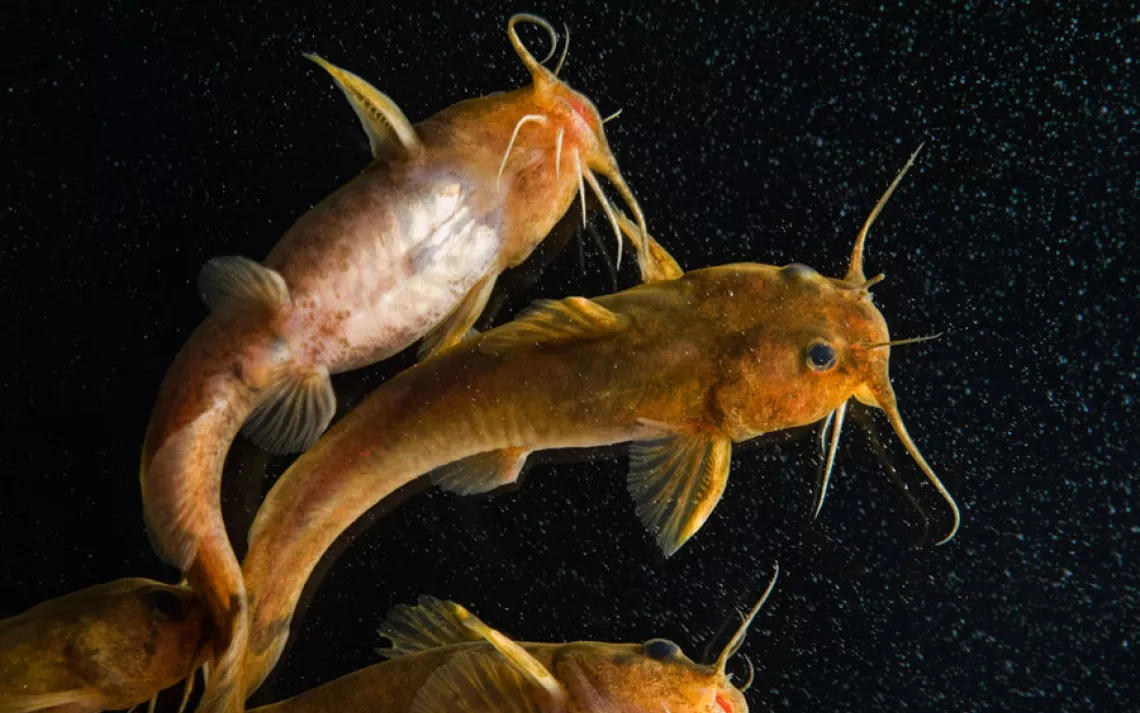
The yellowfin madtom is a type of small catfish native to the Tennessee River Valley, and today it can be found in only a handful of streams. Water pollution and habitat disruption have reduced the fish's population to approximately 8,300 individuals, 800 of which live in captivity. (Photographed at Conservation Fisheries Inc., Knoxville, Tennessee)
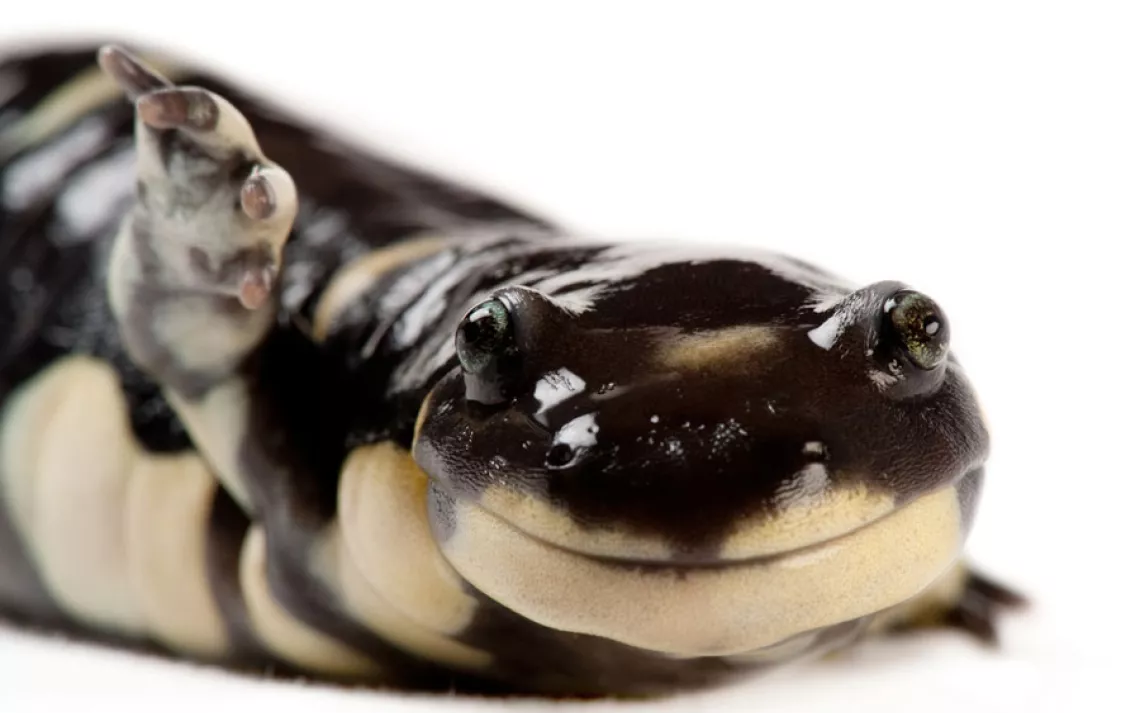
The elusive California tiger salamander spends much of its time sheltered by the underground burrows of other animals. During the rainy season, the salamander emerges to seek vernal pools, journeying up to a mile to reach the temporary ponds that serve as its breeding grounds. Much of the tiger salamander's historic habitat in California's Central Valley is now devoted to agriculture. Isolated populations in Sonoma and Santa Barbara are considered endangered. (Photographed at the Fresno Chaffee Zoo, Fresno, California)
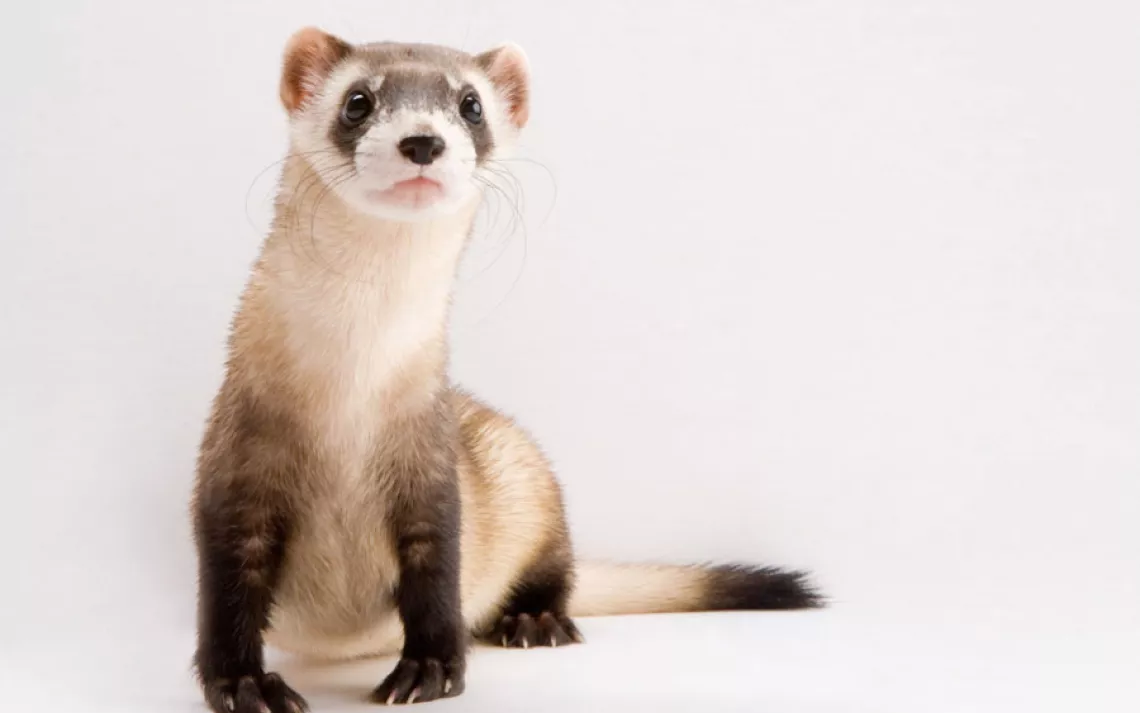
Prairie dog eradication efforts in the early 1900s nearly wiped out the black-footed ferret, which depends on prairie dogs for food and shelter. North America's only native ferret was thought to be extinct until a group was discovered living on a ranch in Meeteetse, Wyoming. Only 18 survived an outbreak of disease at the ferret's last wild bastion. Today, thanks to captive breeding and reintroduction programs, the black-footed ferret population has reached about 800. (Photographed at the Cheyenne Mountain Zoo, Colorado Sprints, Colorado)
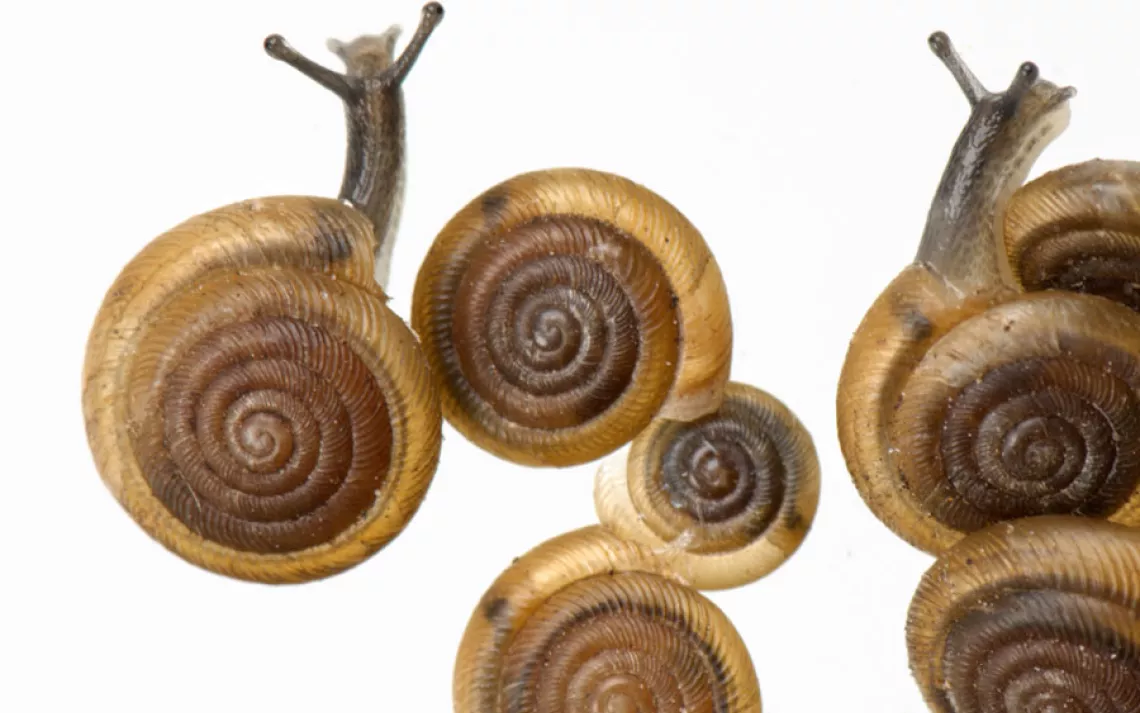
The Iowa Pleistocene snail was believed to be extinct until 1972, when the Ice Age relict was discovered living in the cracks of limestone slopes in Iowa and Illinois, where cold air vents through the cracks, mimicking the Pleistocene climate. Hot air is deadly to the snails, so they cannot survive-even briefly-beyond their microhabitat. Joel Sartore explains how he captured the images without harming the fragile snails: "The entire photo set-up consisted of a flash, a macro lens, and a piece of white plastic stuck in a cracked rock. That they're the size of a pencil lead adds to the fun of trying to photograph them." (Photographed in Clayton County, Iowa)
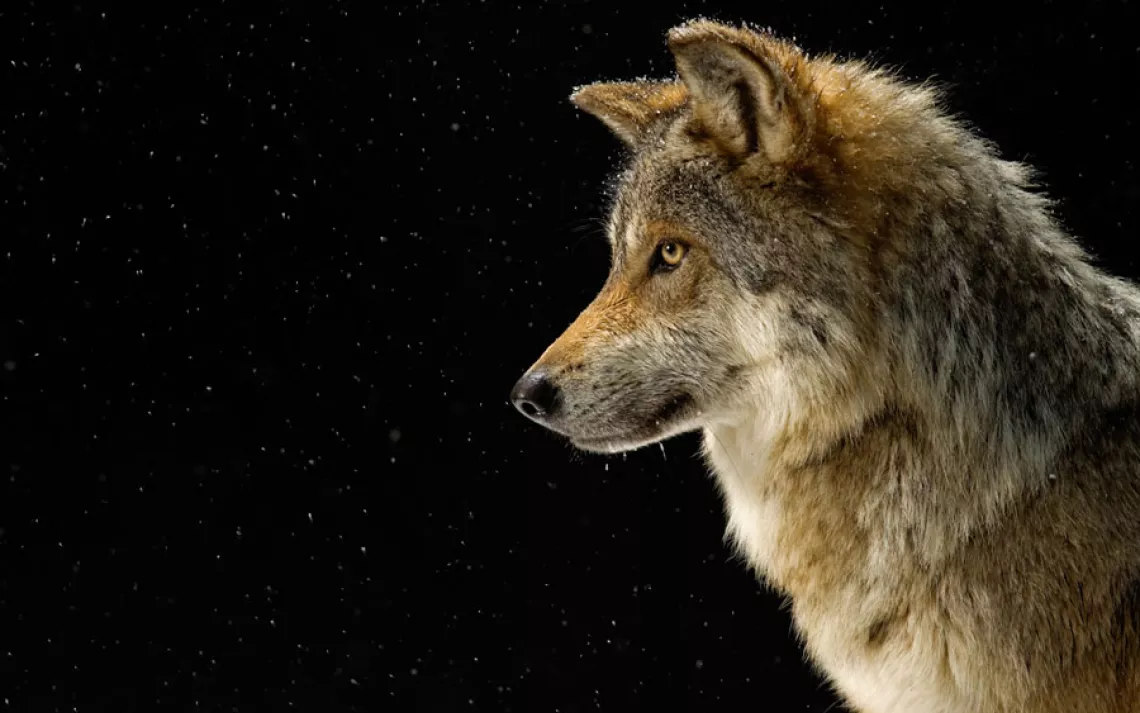
The smallest gray wolf subspecies in North America, the Mexican gray wolf once roamed vast swaths of Arizona, New Mexico, Texas, and Mexico. Now, only 50 exist in the wild and less than 400 live in captivity. This wolf, named Anna, was part of a captive breeding program; she gave birth to some 40 pups. Some of her offspring have been reintroduced to the wild. A target of recent legislative attacks, the Mexican gray wolf may be most threatened by politics. (Photographed at the Endangered Wolf Center, Eureka, Missouri)
By Della Watson
Della Watson is Sierra's web editor.
More articles by this author The Magazine of The Sierra Club
The Magazine of The Sierra Club


